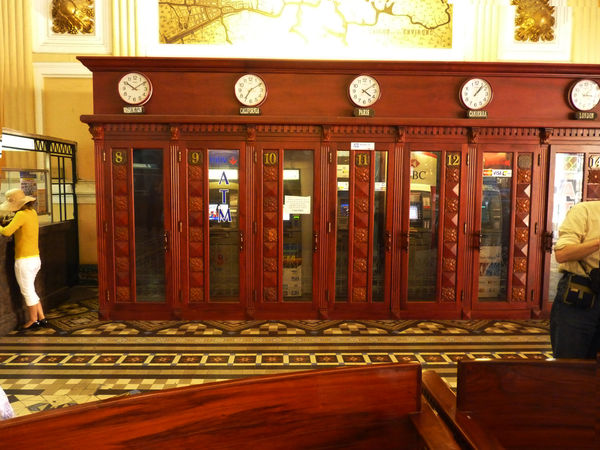Those questions that make you feel old.
Jan 17, 2015 21:58:53 #
I was posting a reply to a survey on the HOG and ask my grand daughter, now 13 years old, to bring me the film camera. She ask "What's film?".
I tried my best not to ask for a cane and rocker next and politely answered her question on how pictures were made in the OLD DAYS!
Anything like this happen to you?
I tried my best not to ask for a cane and rocker next and politely answered her question on how pictures were made in the OLD DAYS!
Anything like this happen to you?
Jan 17, 2015 22:10:33 #
Yes, as in "What's a clutch?". Seems like cars now shift themselves.
Jan 17, 2015 22:21:58 #
Jan 17, 2015 22:30:01 #
Jan 17, 2015 22:31:10 #
Jan 17, 2015 22:31:51 #
You mean your telephone was attached to a wire in the house. And you could not take it to your room???
Jan 17, 2015 22:42:12 #
capsar050 wrote:
I was posting a reply to a survey on the HOG and ask my grand daughter, now 13 years old, to bring me the film camera. She ask "What's film?".
I tried my best not to ask for a cane and rocker next and politely answered her question on how pictures were made in the OLD DAYS!
Anything like this happen to you?
I tried my best not to ask for a cane and rocker next and politely answered her question on how pictures were made in the OLD DAYS!
Anything like this happen to you?
Cameras are not the only recording media. I love to listen to music, as do many other Hoggers, I'm sure. My first records were, believe it or not, Edison cylinders, which were followed by 78-rpm shellac discs, then several speeds of vinyl LP records, then reel-to-reel and 8-track and cassette audio tapes, then VHS and Sony Beta audio/video tapes, then digital compact discs, then DVD discs -- and my grand-daughter (a professional classical violinist) told me that none of those are used anymore. Some kind of little digital card stores a zillion musical performances. I've got about 2,000 LPs that I love to listen to, although I have about a thousand CDs as well. Of course, none of the "advances" are compatible with each other.
Anyway, you still need eyes to see photos, and ears to hear music. I really shouldn't complain -- I spent the final 15 years of my working life at AT&T Bell Labs with the scientists who created all these technologies. Personally, I don't even own a cell phone, much less an I-phone, although I am obviously entering this message on a computer (desktop - I'm not keen on tablets).
Jan 17, 2015 22:53:01 #
Vacuum tubes. They were just starting to go away when I got into electronics.
Jan 17, 2015 23:07:20 #
n3eg wrote:
Vacuum tubes. They were just starting to go away when I got into electronics.
In the 1950's and '60s, we could repair our own TV sets when they went black or had other problems. Many small neighborhood malls had a vacuum tube tester machine. You unplugged the "usual suspects" from your set and took them to the mall. When one or the other flunked the test, you picked out a replacement tube from the stock, went home and plugged everything back in, while the wife admired your technical skills. Then "integrated circuits" came along and the TV had to go into the shop, where they'd often report that you need a new set.
Jan 17, 2015 23:10:12 #
RichardQ wrote:
In the 1950's and '60s, we could repair our own TV... (show quote)
Then "integrated circuits" the beginning of our throw away society.
Jan 17, 2015 23:40:03 #
Jan 18, 2015 00:38:19 #
How about typewriters, and if you wanted multiple copies of something, you had to use carbon paper, and if you wanted a lot of copies, then you had to use the mimeograph machine. In my high school, when we typed term papers, we weren't allowed to use correction fluid, and it seemed I always made a typo in the footnotes, and had to type the whole page over.
Jan 18, 2015 01:15:41 #
JohnSwanda wrote:
How about typewriters, and if you wanted multiple copies of something, you had to use carbon paper, and if you wanted a lot of copies, then you had to use the mimeograph machine. In my high school, when we typed term papers, we weren't allowed to use correction fluid, and it seemed I always made a typo in the footnotes, and had to type the whole page over.
Don't forget the Teletype machine! I'll bet the Defense Dept. still uses them. Where have all the public phone booths gone? And then there was the Long Distance Call Center, operated in large office buildings by AT&T's Long Lines. A control desk with operators was surrounded by individual numbered phone booths. To make a call, you physically came to the center, gave the desk the number you were calling (and the party's name if a person-to-person call), then waited until they called your name and the number of the booth assigned to you. If you placed the call from home or office, your local operator connected you to Long Distance, always a woman except for some international calls, who would call you back when a connection was achieved. International calls were started in 1927, and were handled by radiowave -- there were no transatlantic voice cables until 1956. Sunspots and other atmospheric disturbances could garble your connection, but there were no refunds of the $12.00/3 minute call charge.
Jan 18, 2015 04:25:06 #
RichardQ wrote:
Don't forget the Teletype machine! I'll bet the D... (show quote)
The last time I saw phone booths was in Saigon in 2010 at the central Post Office where they had been converted into ATM stations with privacy.
Saigon main Post Office Phone Booths

Jan 18, 2015 06:08:45 #
APB
Loc: UK
JohnSwanda wrote:
How about typewriters, and if you wanted multiple copies of something, you had to use carbon paper, and if you wanted a lot of copies, then you had to use the mimeograph machine. In my high school, when we typed term papers, we weren't allowed to use correction fluid, and it seemed I always made a typo in the footnotes, and had to type the whole page over.
When I first started teaching, many moons ago, there was an 'old timer' geographer who could produce the most wonderful worksheets for his classes. These had up to 3 colours, each produced on separate sheets and then brought together on the 'Banda' machine.
The fluid used in the operation was strong enough to pickle walnuts!
Maybe that's why he taught geography for so long?
If you want to reply, then register here. Registration is free and your account is created instantly, so you can post right away.






